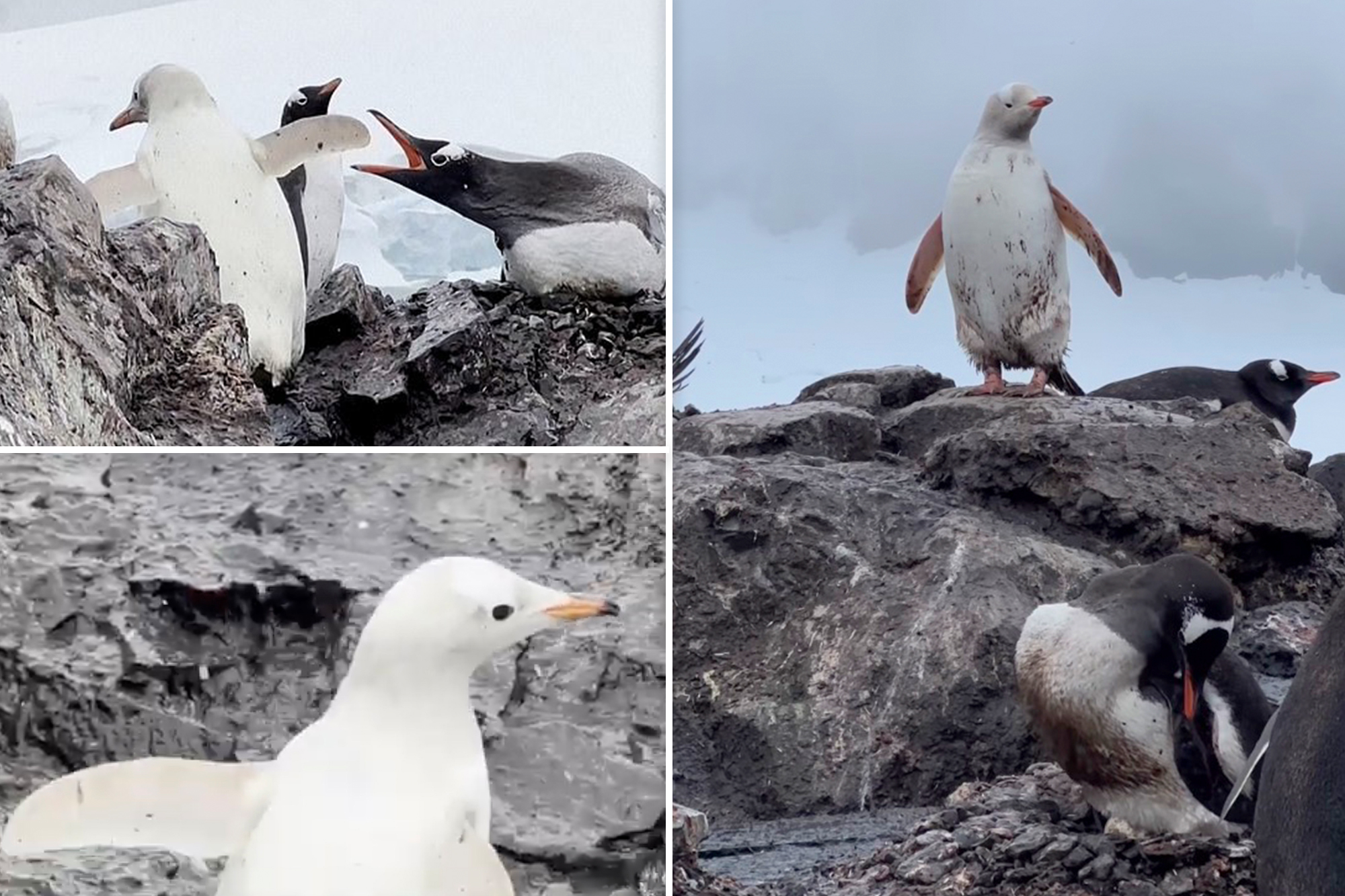
Not all penguins wear tuxes.
A rare white penguin has been spotted at a scientific base in Antarctica, where it was standing out like a sore thumb among its black-and-white brethren.
The bird, which belongs to the Gentoo species, was discovered by researchers at the González Videla Antarctic base on Jan. 4, CBS News reported.
The species typically have reddish-orange bills and black heads with white patches around their eyes, the result of a genetic mutation known as leucism.
“Although pigmentation is present, it is not present across the whole specimen,” Dr. Diego Penaloza, a veterinarian, told Reuters, saying there have been other cases of the mutation in other species, including giraffes, alligators, whales and bison.
Unlike albinism, which affects all melanin production, leucism does not impact pigment cells in the eyes.
The condition isn’t harmful per se, but it can still prove dangerous for the penguin.
“In this case, being an animal that has a mostly white body, it can make it easier for a predator to hunt it and that is why cases of leucism are also very rare,” Penaloza said.
“Because in addition to being recessive genes that are rarely seen, they are also animals that are very exposed – in the case of penguins – to being eaten more easily by a predator,” he added.
Gentoo penguins are the third-largest living penguin species, with adults ranging in size from about 11 to 17.5 pounds, according to the Australian Antarctic Program.
Emperor penguins, meanwhile, can reach nearly 4 feet tall and weigh more than 88 pounds, according to the World Wildlife Fund.
Gentoos are one of the rarest Antarctic penguins, “with about 300,000 breeding pairs,” according to the British Antarctic Survey.
They also are known for having one of the “most prominent” tails of all penguin species — swinging from side to side as they walk.














